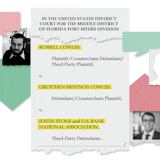I was talking with a City Council member from one of the southern suburbs about transit. At the time, I worked at the Metropolitan Council doing transportation planning. He said to me, "We need more transit out here." I replied, "You don't have enough density to support transit." He responded, "Yes we do. Look at that multifamily development over there. It has 150 units. And that one [about a mile down the road] has about 250 units. And another mile down the road, there is another one with 200 units. That's density."
I had to explain to him that, yes, that was density, at least compared to single-family homes. But it wasn't functional density — density that makes transit work or lets people walk to grocery stores or restaurants.
The Star Tribune Editorial Board, in "A new challenge to Mpls. density push" (Sept. 3), makes the same mistake as the suburban council member. The board writes: "The new plan called for beefing up density along transit corridors and, most notably, ending single-family zoning citywide."
But, again, that density won't be functional. Minneapolis is projected to grow 10% over the next 20 years. The city's plan is to accommodate growth by allowing developers to put 10-story buildings along any transit corridor in which the developer can find land. When the founding fathers created Minneapolis on a streetcar grid, at maximum, every eighth street was a streetcar line, and in many places, every fourth street was. With the 2040 Plan, developers can put 10-story buildings all over the city.
And most transit routes are not commercial corridors like Lake Street or University Avenue. Most transit routes are lined with single-family homes, such as Lyndale Avenue (North and South) or 42nd or 2nd Street or Thomas. That means developers can put new development pretty much anywhere they want, squandering our ability to create real, functional density.
Another thing the 2040 Plan does is allow any single-family home to be demolished and replaced by a triplex. Triplexes also do not create functional density, either. They just create a land rush and push up already sky-high prices.
Seattle rejected the Minneapolis approach and chose one part of the city to focus development to create real, functional density. We did this also under the old zoning code and created a walkable downtown and a North Loop that have the kind of density that the Minneapolis City Council and the Editorial Board purport to support but do not.
The Editorial Board also writes that we need to allow 10-story buildings into currently residential areas within a five-minute walk of the Southwest light-rail line. Not just adjacent to the light rail or a block away, but five blocks away. Will market demand for housing be so great that we need to upzone blocks away from the light rail? Luckily, we already have an experiment to look to — the Blue Line along Hiawatha Avenue. It began operating 15 years ago, and we can say unequivocally that high-density development will not spread blocks from a light rail station.


